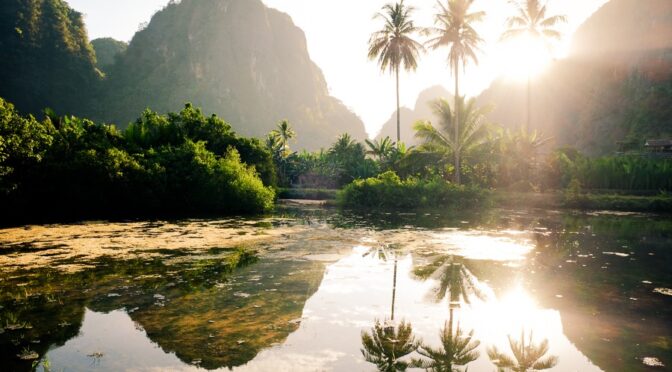New outlooks are necessary to preserve cultures impacted by modernization
By Mitchell Stevenson
Introduction
In Molas, a rural village in Sulawesi, Indonesia, rapid growth in tourism since the mid-1990s has placed pressure on its traditional agrarian society. The village is in a semi-mountainous tropical area with beautiful coral reefs and fertile farmlands, providing villagers with ample natural resources and making the village an attractive tourist destination. The proposed development of a new resort in Molas promises to bring the benefits of tourism to the local economy, but also with it, stereotypical tiki bars, cabanas, and resort style pools. The proposed tourism development has fomented a divide between residents who want to pursue traditional agriculture and those who seek modern economic development. Simultaneously, this conflict has been exacerbated by the increasing availability of education coupled with the lack of local higher-level jobs for qualified villagers. These social changes and tensions have fueled uncertainty about the future direction of Molas as well as other small villages in the region.
Analysis
A study of livelihood strategies conducted by Walker (2001) in Molas between September and December 1997 used interviews, economic activity surveys, historic land use, and ownership mapping to better understand the potential impact of tourism development on the community. Livelihood strategy analysis has been developed to help identify and predict social phenomena in a more accurate way than traditional social impact analysis. This tool also serves to create more nuanced development plans as it tackles topics such as “inequality in the distribution of benefits and costs of development; impacts on community cohesion; (and) changes to local and regional power structures…” (Walker, 2001: 299).
Walker’s study found extensive concerns among villagers about the future of the village and region in terms of its biophysicial, economic, social, and cultural resources (Walker, 2001: 306). These concerns involved the loss of family values, cultural heritage, and geographic makeup of the historical village of Molas, suggesting that the development of a resort would contribute to cultural erasure. The resort development would thus reproduce a common failure in international planning by replicating a Western-centric desire for modernity and economic growth while overlooking pro-poor and inclusive considerations (Watson, 2007: 2260). The loss of traditional livelihood practices in Molas would constitute a loss of cultural identity (Watson, 2007: 2262), illustrating the negative impacts of colonial planning and development practices even decades following independence.
Implications
The people of Molas’s heightened concern with social and cultural losses rather than economic growth, as suggested by Walker’s (2001) study, provides an opportunity for what Sandercock and Attili (2014) refer to as “therapeutic” planning. Although typically used for repairing damaged relationships in the context of indigenous land rights and cultural struggles (Sandercock and Attili, 2014: 19), therapeutic planning could also be used to document and preserve local culture and thus combat the loss of cultural capital. The goals of therapeutic planning are to create a space for discussion of shared struggle and to spark hope for the future (Sandercock and Attili, 2014: 20). This practice relies on the creation of innovative spaces and collective artworks, such as film, theater performances, or cultural events, among others, to foster critical dialogue about social change and community values. In Novoa’s (2017) work in Lota, Chile, local women community organizers told their story of political repression and economic decline through a collectively designed storyboard. The development of the storyboard helped the residents of Lota articulate and critically reflect on the changes and forms of oppression that have afflicted the community over time, providing a refuge and a foothold for restorative justice. Therapeutic planning thus has the potential to engage and unite communities who face disruptive changes, involving the community in critical reflection so that residents can better adjust their livelihood strategies and benefit from impending development pressures (Walker, 2001: 308).
Such therapeutic planning should be premised on a careful livelihood strategy analysis, which enhances a comprehensive understanding on how change, driven by modernization and tourism, may affect community life. Livelihood strategy analysis also creates better understanding of which cultural, social, or environmental aspects residents value most highly, allowing for better distribution of resources to prepare for the future. Given the potential negative externalities from Western-focused or neoliberal planning and development, livelihood strategy analysis serves to connect people to decision-makers in a more direct, personal way, thus guiding policymakers towards inclusivity, equity, and environmental sustainability. Livelihood strategy analysis can provide a more nuanced and dynamic perspective on the changes facing communities while engaging residents in the development of future cultural spaces, practices, and norms.

Sulawesi, Indonesia. Source

Bunaken Resort, Molas, Indonesia. Source

Coral Reef in Sulawesi, a Popular Tourist Attraction. Source
